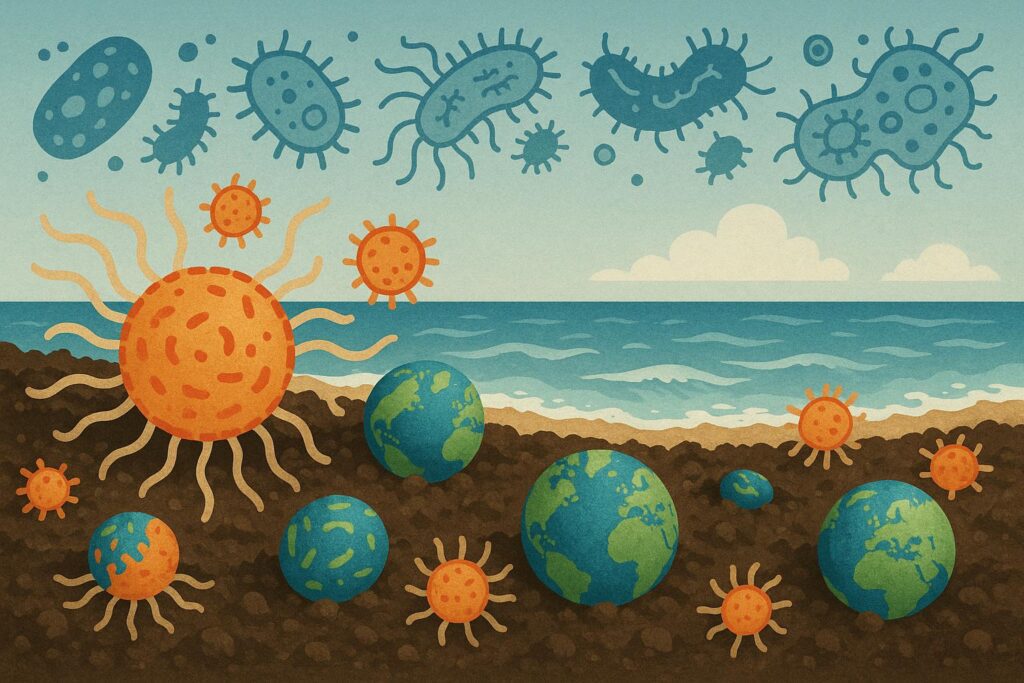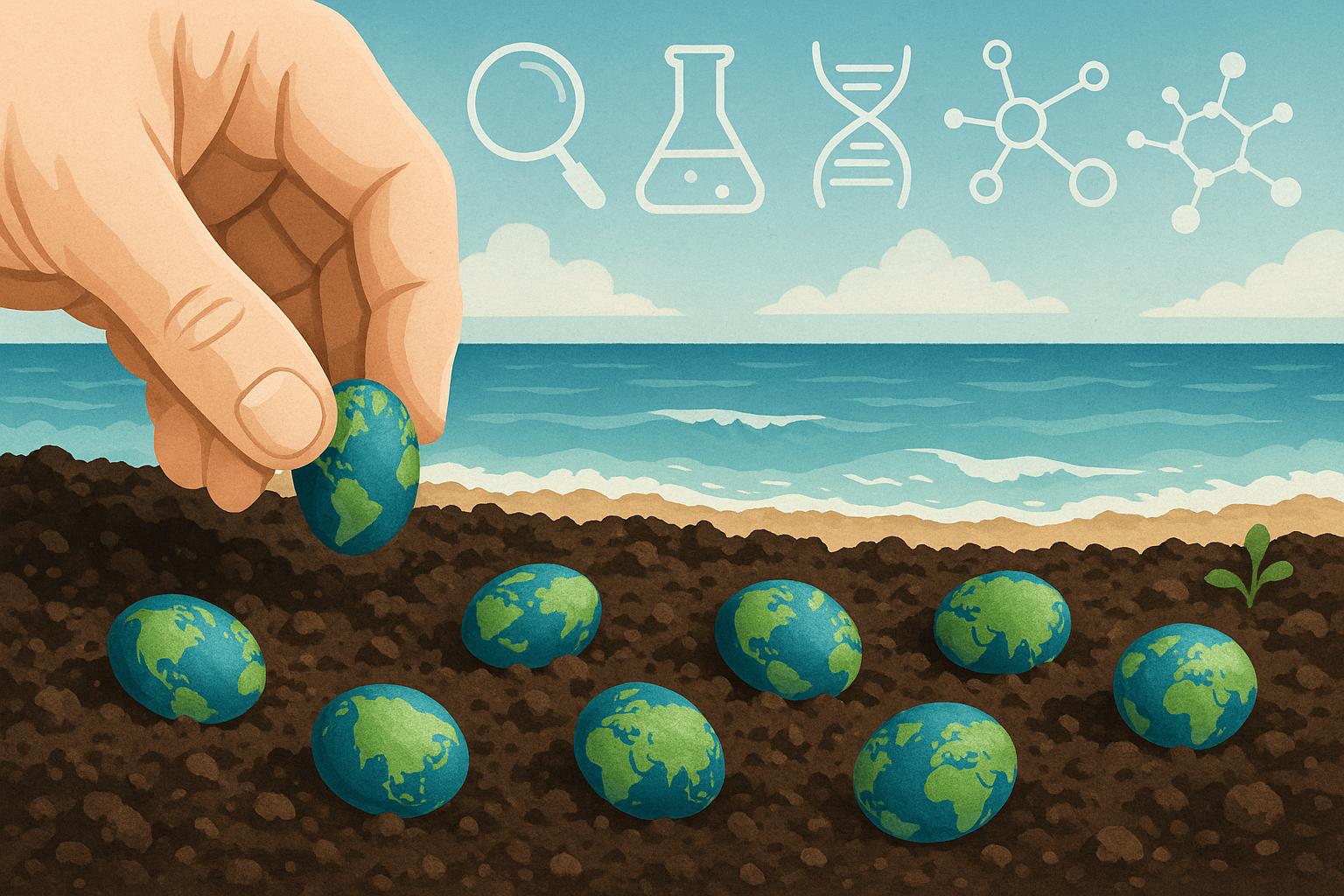The future of agriculture is quietly unfolding inside something small: the seed. As challenges like soil degradation, water stress, and climate volatility threaten crop resilience, seed technology is evolving—blending ocean extracts, earth minerals, and scientific innovations into a protective shell around each seed. This isn’t just about growing more; it’s about developing better from the very beginning.
When marine bioactives, terrestrial minerals, and agronomic science meet, a seed becomes more than a vessel for germination—it becomes a biologically active launchpad. Coatings that integrate these elements are rewriting the rules of germination, nutrition, disease resistance, and yield optimization.
How Ocean Elements Trigger Seed Response
Marine extracts are rich in natural compounds that interact with plant hormone pathways. Seaweed species like Ascophyllum nodosum and Sargassum offer naturally occurring cytokinins, auxins, and betaines that act on the seed before the first root breaks through.
These substances help stimulate cellular division, modulate osmotic balance, and regulate early enzymatic activity.
Key bioactive ocean compounds found in seed coatings:
- Mannitol and fucoidan: Improve stress tolerance at germination.
- Alginates: Enhance water retention and enable even moisture delivery.
- Cytokinins from kelp: Promote early leaf initiation and strong shoot architecture.
For example, when treated with seaweed extract coatings, rice seeds under water stress showed a 22% higher emergence rate and 17% longer root length within 7 days.
Why Earth Minerals Matter in Seed Coating Formulations
Earth-based materials like zinc, silicon, humic acids, and calcium are critical for early seedling development. These minerals act at multiple levels: from structural reinforcement to enzymatic co-factors.
Zinc stimulates auxin production. Calcium supports cell wall rigidity. Silicates increase resistance to biotic stress. Together, they prepare the seed for a competitive start.
In maize trials across Telangana, seed coatings containing diatomaceous earth and chelated micronutrients improved chlorophyll density by 14.8% and reduced early pest damage by 21% compared to untreated controls.
These mineral layers often serve as carriers for more sensitive bioactives, safeguarding microbial inoculants or temperature-sensitive hormones through encapsulation technologies.
What Role Does Science Play in Balancing Nature?
Scientific formulation ensures that ocean and earth elements in seed coatings are not just added, but optimized. Research focuses on:
- Controlled release mechanisms to synchronize with seed metabolism.
- Microbial compatibility, ensuring bio-stimulants and inoculants can co-exist.
- Environmental adaptability for varied pH, temperature, and humidity conditions.
In ambient storage, active compounds can remain stable for up to a year thanks to advanced polymer technology. Additionally, polysaccharides and other binding agents guarantee a consistent coating without compromising the permeability of seeds.
Combining marine biostimulants with plant-growth activators, like forever-Nitrobenzene 35% Growth Promoters, is one notable invention. This formulation, when incorporated into nutrient-based coatings, enhances enzyme activity at the cotyledon stage, facilitating faster cell division and the production of chlorophyll. Gujarati cotton growers who employed this hybrid coating technique reported output increases of up to 19%.
- Boosts early photosynthetic efficiency by regulating stomatal development.
- Reduces transplant shock by enhancing internal osmotic balance.
How These Coatings Improve Germination and Vigor
Once water activates the seed, coated bioactives begin to work within minutes. Seeds absorb ocean-derived compounds and minerals simultaneously, triggering:
- Rapid enzyme activation for energy mobilization.
- Cell elongation and division in radicle and plumule.
- Stronger microbial colonization around the rhizosphere.
This process enhances uniformity in field emergence and improves the root-to-shoot ratio. These two parameters directly influence how efficiently the plant accesses soil nutrients and withstands abiotic stress.
“The seed is not just potential—it’s memory, chemistry, and design. The right coating doesn’t just protect; it primes the seed to perform beyond its genetics.”
- Dr. Lianne Coetzee, Soil-Plant Interface Researcher
How Microbial Life Interacts with Ocean & Earth Coatings

Beneficial microbes like Azospirillum, Trichoderma, and Rhizobium are often included in bioactive seed coatings. The presence of humic acids and marine sugars, such as mannitol, helps them thrive and colonize the rhizosphere quickly after germination.
In pulses like chickpeas and mung beans, seeds coated with a blend of humate minerals, seaweed extract, and Rhizobium showed:
- 25% higher nodulation activity
- 12% increase in plant nitrogen content
When soil pH or salinity is suboptimal, these microbes can buffer the immediate zone around the root—creating micro-niches that support continued root growth.
For deeper insights on bioinoculant usage and compatibility, the European Commission’s plant biostimulant guidance provides valuable technical specifications and definitions.
Environmental Resilience: The Coating Advantage
In erratic climates, seedling mortality often results from delayed emergence or poor root development. Coated seeds mitigate this by offering a hydration-retentive layer that buffers against uneven rainfall.
Silica-coated seeds showed an 11–18% increase in emergence rates in arid zones compared to uncoated seeds. The presence of marine polysaccharides enhances this effect by binding water molecules around the seed surface, forming a moisture-regulating gel.
Coatings that incorporate soil minerals like bentonite or zeolite also help in:
- Reducing seedling heat stress by acting as thermal buffers.
- Neutralizing salinity pockets in seed zones by cation exchange.
These traits help crops establish more uniformly and resist early-stage abiotic stress, crucial in climate-vulnerable geographies.
Crop-Specific Coating Adaptations
Each crop responds differently based on seed coat thickness, permeability, and nutritional demand. Custom coating matrices are now being designed based on seed genomics and microclimate data.
| Crop | Key Coating Elements | Observed Benefits |
| Soybean | Seaweed extract + molybdenum + humate | +14% nodulation, better biomass |
| Tomato | Chitosan + calcium silicate + kelp | +18% disease resistance |
| Wheat | Silicate + humic acid + marine trace elements | +20% root development |
| Groundnut | Trichoderma + sea minerals + boron | +12% germination in dry soils |
Smart coatings are also under development, using temperature-sensitive layers that delay microbial release until optimal soil warmth is achieved.
For advanced techniques in seed treatment and formulation analytics, ISTA’s Seed Science Journal offers peer-reviewed data and case studies.
FAQs
- Do these coatings delay germination?
No. Proper formulations enhance water absorption and enzymatic activity, often reducing germination time by 1–2 days. - Are marine ingredients safe for organic farming?
Yes, when derived from OMRI-certified sources like cold-processed kelp or fish hydrolysates. - How long do coated seeds remain viable?
Most remain stable for 6–12 months. Storage in cool, dry conditions is key. - Can coated seeds be used in direct seeding methods?
Yes. They’re compatible with precision planters, seed drills, and even manual broadcasting. - Do these coatings affect soil biodiversity?
Positively. They enhance microbial life around roots, especially when humates and bioactives are present.
What to Expect When Seeds Carry Ocean and Earth Within
When a seed carries both the memory of the sea and the structure of the soil, something new happens. Its environment no longer dictates success alone—the seed starts with its ecosystem. It’s hydrated with marine polysaccharides, shielded with earth minerals, and boosted by biochemical engineering.
This fusion results in seeds that grow faster, have deeper roots, and resist stress for more extended periods. They build stronger biomass, deliver more uniform stands, and reach their genetic potential with greater precision.
As seed coatings continue to integrate natural compounds and scientific precision, the field becomes more than just soil—it becomes a stage for biological intelligence. And the seed, no longer passive, becomes the smartest start any crop can get.
Check out more blogs: How to Maximize Yield with a Single Solution for Multiple Pests



[…] Checkout more blogs: What Happens When You Mix Ocean, Earth & Science in a Seed Coating […]